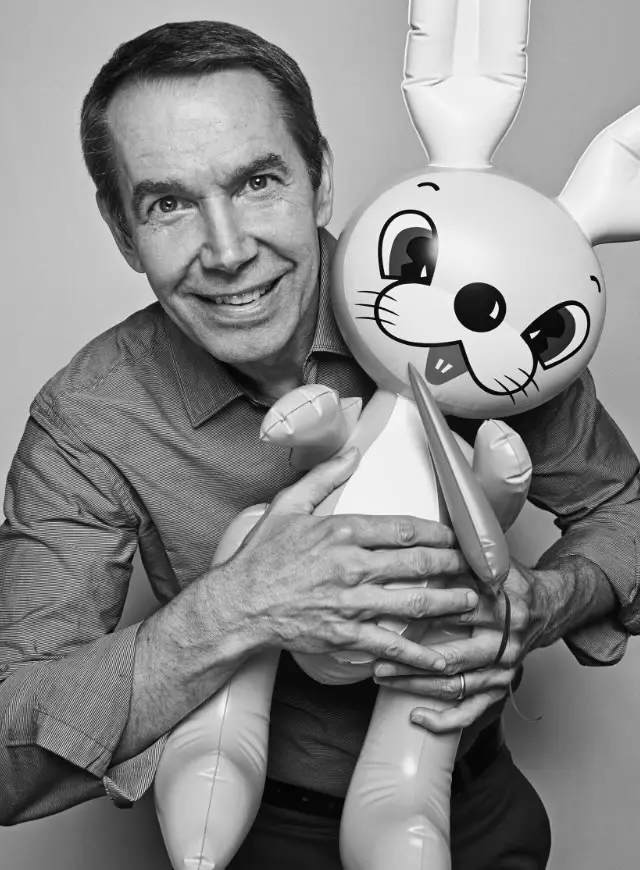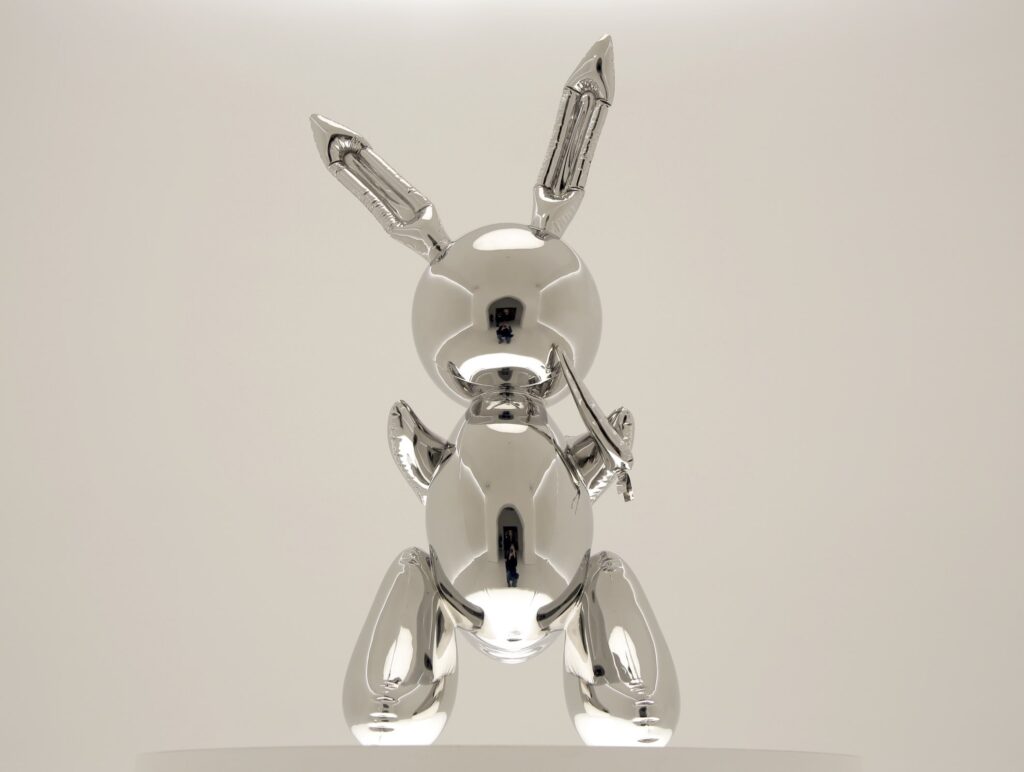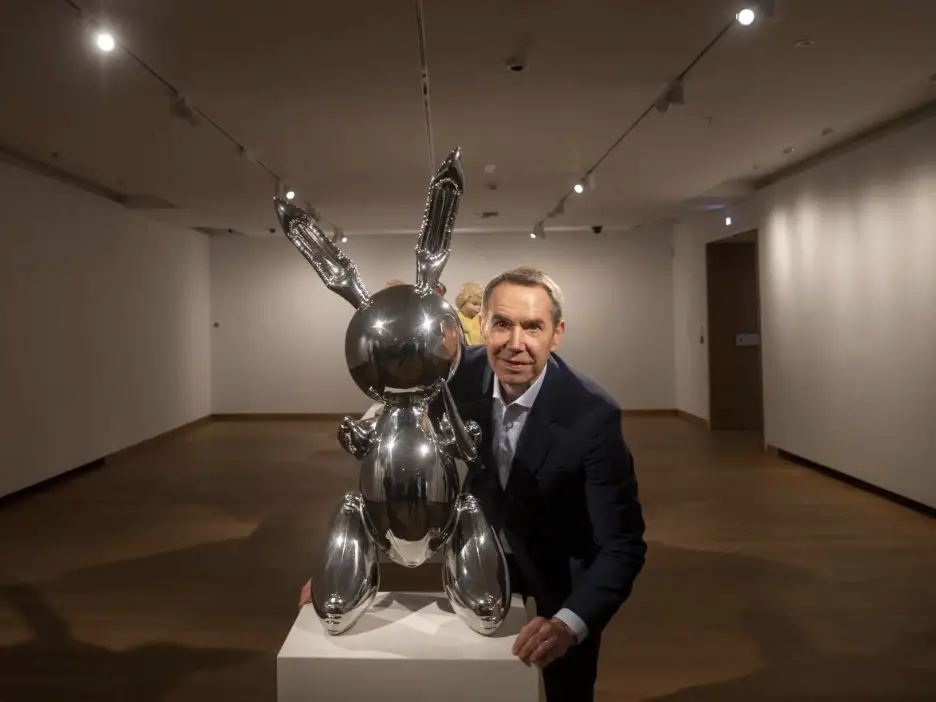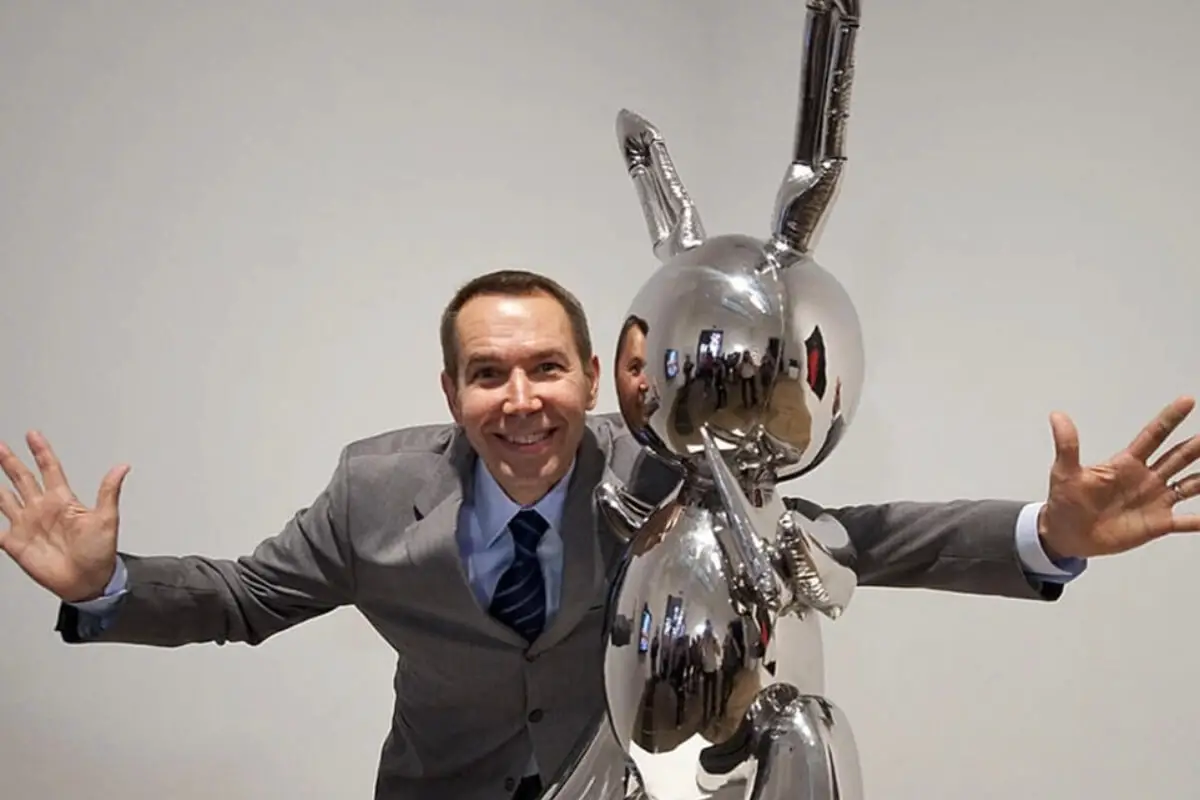Seizing the global stage in contemporary art, Jeff Koons has successfully sowed his inventive seeds within imaginations worldwide, particularly with his signature piece, ‘Rabbit.’ An emblem of artistic innovation, Koons’ journey from a humble background to prominence outlines a personal triumph and the advent of a new paradigm in art.
With a legacy built on challenging conventions and catalyzing thought, Koons’ influence extends far beyond individual pieces, epitomized in the monumental presence of his ‘Rabbit’ sculpture.
Table of Contents
- Brief Background of Jeff Koons
- Understanding Koons’ Rabbit
- Importance of Rabbit in the Contemporary Art Movement
- Impact and Influence of Rabbit Today
- Related Questions
Brief Background of Jeff Koons
Born in 1955, Jeff Koons is an icon in contemporary art. With a years-long career characterized by great highs and occasional lows, Koons defies boundaries and invites audiences to reimagine art’s conventional function and purpose.
His journey in art began early in life; growing up in Pennsylvania, he experimented with various art forms and eventually attended the Maryland Institute College of Art. He epitomizes the quintessential success story of an ambitious young artist who shifted from financial commodities and membership selling to enriching the world with groundbreaking art creations.
Koons is known for blending the borders between high and low culture, producing work that elicits intrigue and bewilderment in equal measure. Among the broad spectrum of topics he explores, his critique of consumerism and the media’s influence on beauty standards stands out dramatically.
Strongly influenced by pop art, Koons’ first collection, “The New,” premiered in the early 1980s and consisted of vacuum cleaners displayed in acrylic boxes. It was a deliberate commentary on society’s obsession with pristine, unblemished goods, a manifestation of consumerist tendencies taken to the extreme.

Later, Koons began experimenting with stainless steel structures, mirroring everyday objects such as balloon animals or plants. The balloon dog in “Celebration,” one of his most famous collections, was sold in 2013 for a staggering 58.4 million dollars, establishing him as one of the highest-selling artists at auctions.
Like his many other works, this piece explores the interplay of reality and artifice. With the mirrored surface reflecting the surroundings, the observer always sees their distorted reality, subtly suggesting that perception might be easily manipulated and questioning what constitutes true beauty in that distortion.
Jeff Koons also gained recognition in the art world with his “Banality” series, which depicts kitschy scenes from popular culture made using elaborate wood carving and porcelain casting techniques. These pieces often received backlash for their overt excessiveness, showcasing Koons’ ability to prompt discussion and incite dialogue about art’s purpose and importance in society.
One cannot discuss Koons without mentioning the ‘Made In Heaven’ series. Explicitly erotic, these works courted controversy and evoked mixed responses, contributing to his controversial reputation. This boldness is a testament to his unparalleled fearlessness in pushing boundaries and confronting societal norms.
Koons’ profound commentary on contemporary society, willingness to embrace controversy, and a knack for creating visually striking and unforgettable works have deservedly established him as a significant influencer in the art world. His unconventional yet thoughtful exploration of how art interplays with consumer culture continues to provoke thought, spark discussions, and inspire future artists.

Understanding Koons’ Rabbit
The Rabbit: A Significant Icon in Jeff Koons’ Artistic Journey
The significance of the rabbit in Jeff Koons’ artistic canon cannot be understated. While the artist’s extensive portfolio spans an array of themes, techniques, and materials, the depiction of the rabbit has emerged as an unmistakably distinctive symbol in his work.
The rabbit first appeared in Koons’ 1986 stainless steel sculpture aptly titled “Rabbit.” This mirror-polished work of art, fashioned from an inflatable children’s toy, is not only an emblem of Koons’ precise craftsmanship but also embodies his penchant for reevaluating and reinventing mundane objects, offering them a new life and meaning.
The allure of the rabbit in Koons’ work dwells in its densely packed symbolism. Traditionally, rabbits have been seen as symbols of fertility, innocence, and naivety. However, Koons’ interpretation complicates this perception, adding a layer of irony and critique. His ‘Rabbit’ is shiny, sterile, and untouchable—elements that directly oppose the natural characteristics of this creature, known for its softness and vulnerability.
In maturing the concept of the rabbit’s reinterpretation, Koons’ talent for bridging the gap between high art and popular culture shines through. He takes an object associated with childhood and familiarity and repositions it within an unanticipated context to solicit intellectual thought and dialogue.
Moreover, the rabbit’s reflection in the stainless steel mirrors the audience and society, compelling observers to interpret their image reflected at them. This invites a reflective process of self-reflection and socio-cultural critique. It becomes a projection of ourselves and society in a broader framework, challenging our inner worldviews and outer perceptions, realities, and illusions.
In later pieces, both in the “Celebration” series and beyond, the use of rabbit continues. Each occurrence amplifies the narrative of manipulation and metamorphosis, creating a visual dialogue between the art, the viewer, and the ubiquitous culture of consumerism that Koons so vividly critiques. It reminds the audience that art lies not in the object but in its relationship with the beholder and the emotional and intellectual engagement it instigates.
Throughout Koons’ career, his works have been lauded and criticized in equal measure, showcasing the inherent subjectivity of the art world. However, his use of the rabbit is a testament to his artistry and innovation, continuing his journey as one of contemporary art’s most provocative and intriguing objects.
Even after his other series, the rabbit in Koons’ art arguably remains the most compelling. It portrays Koons’ vision of art as transformative, aggressive, and provocative. By continually testing the boundaries of comfort, Koons’ rabbit intrigues and challenges conventional notions about art, its purpose, and its effects on society. Through his rabbit, Koons questions the world we live in and the role of art in shaping our perceptions, interpretations, and, ultimately, our reality.

Importance of Rabbit in the Contemporary Art Movement
Jeff Koons’ ascent to the pinnacle of the contemporary art scene was a spectacle in the 1980s, embodying the era’s unabashed embrace of commodity culture, kitsch, and personality-driven art. One key figure propelling this voyage was Koons’ iconic 1986 sculpture, “Rabbit”. The sleek, reflective, inflatable bunny, crafted from polished stainless steel, created a stir in the art community, cementing Koons’ status as a true provocateur.
The Rabbit deserves its place in the lexicon of influential art symbols, acting as a dynamic antenna for comprehending the vortex of modern consumerism. Synonymous with Koons’s oeuvre, the sculpture has been utilized to express an opposing sequence of ideas and emotions. On one level, the rabbit is a playful, benign figure we associate with childhood and Easter. Still, Koons’ version morphs this innocent relic into a haunting, ethereal, eerily precise form – defying the flimsiness we associate with balloons.
By evolving the humble inflatable into a lasting work of art, Koons ignited a dialogue on the intertwined relationship between mass consumerism and our inherent need for sustenance. Here, the rabbit, an animal renowned for its rapid reproduction capabilities, is a parody of hyper-consumerism – a stark representation of our proliferative consumption habits.
The Rabbit stems from popular culture, highlighting the mass commodification of our common experiences. Bounced off Koons’ mirror-polished stainless steel sculpture, our distorted faces become a part of the art. This interactive art experience invites audiences to a transformative engagement, inviting them to re-evaluate their connection with the world shaped by commodities.
Critics have mixed feelings about Koons’ work, including The Rabbit. Throughout the years, he has been lauded as a brilliant satirist and pilloried as a crass opportunist. Despite the controversy, Koons’ manipulation of the rabbit motif undeniably pushes the message that informed his oeuvre: art, like life, should be vigorously consumed and enjoyed, its pleasures and meanings malleable in the eyes of the viewer.
Koons’ Rabbit, often touted among his most influential works, has served as a mirror to society. Through its form, it has subverted traditional art norms, redefining art’s role about society and commodity culture and making us question our perception of reality. It expresses humanity’s visceral response to consumerism’s seductive yet shallow nature that permeates our lives.
In translating an ephemeral object into a nearly immortal piece of art, Koons’ Rabbit illuminates the transformation engendered by contemporary art – a brilliant testimony to an era characterized by surface, reflection, and artificiality. In this sense, Koons’ Rabbit serves more than just art or critique; it has become a beacon of the contemporary art scene – encapsulating the blurred line between art, commodities, perceptions, and reality.
Impact and Influence of Rabbit Today
Immersed in reverberations of contemporary society, Jeff Koons’s iconic artwork “Rabbit” sparkles intriguingly in the visual lexicon of today’s art scene. His balloon-animal-shaped sculpture, cast in shiny, mirror-polished stainless steel, has cast a riveting light on the interplay between everyday objects, art, popular culture, and consumerist ideologies.
Koons’s “Rabbit,” which debuted in 1986, is an explosive commentary on the status of art and the intersection between high and low culture in capitalist society. Made from a material nearly banal in its ubiquity—stainless steel—the sculpture transforms an ordinary icon of consumerism and popular culture into a more profound symbol. In Koons’s view, art can stem from the mundane, the commonplace, and the dowdy—reflecting the tedious intricacies of our culture and highlighting how even the most ordinary objects we’re surrounded by carry a specific submerged symbolism.
“Rabbit,” a quirky and shiny, balloon-like replica of an animal symbol heavy with pop culture and commercial undertones, is an interactive piece that cleverly invites viewers to see their reflection in its mirrored exterior. This passive interaction forces introspection, making the viewer a part of the critique and commentary within the art itself. The viewer’s engagement with the art—a mirror image of themselves superimposed on the depiction of a consumerist symbol—adds another layer to Koons’s critique of consumer culture.
Perhaps more importantly, the “Rabbit” shatters the glass ceiling of art norms. It throws the art scene into question—what constitutes art? Can banal everyday objects become art when transformed and placed in a particular context? The intention behind the creation and the viewer’s experience manifest in the mind-expanding reality of how art shapes our understanding of objects and their cultural significance.
While the sculpture may seem frivolous or whimsical, it is nothing short of a revolutionary artistic critique of mass culture. It’s one reason Koons has sparked adulation and controversy, shattering conventional perceptions of what art should be or represent. As such, Koons’s “Rabbit” forces us to rethink how we perceive art and how we understand and interact with the world around us.
Fast-forward to the present day, the influence of the “Rabbit” sculpture on contemporary art and popular culture is undeniable. The piece’s acquaintance with high culture and mass commodity culture, combined with its provocative commentary on consumerism, has inspired several modern artists to merge the commercial world’s aesthetics and techniques with their artwork.
In essence, Koons’s “Rabbit” has challenged and transformed how we perceive art and highlighted the subtle complexities of our contemporary society. It has disrupted traditional art forms and norms, redefining the role of art in dialogue with our societal constructs and perceptions. His “Rabbit” may very well go down the annals of art as one of the most iconic representations of the contemporary art scene’s intricate dance with art, commodities, and reality.

Jeff Koons ‘Rabbit serves as a testament to the enduring evolution of art. It stands as a beacon of inspiration for contemporary artists while maintaining its relevance in art discourse.
Radiating an irresistible allure, this polished, stainless steel icon has captured imaginations and stirred debates, stirring a potent mix of awe, intrigue, and reflection. Every crevice and curve of the ‘Rabbit’ speaks to Koons’ genius, his bold imagination transcending traditional boundaries. Hence, ‘Rabbit’ remains an emblem of the relentless spirit of creativity, embodying the essence of contemporary art and securing an indelible imprint in the annals of art history.
Anita Louise Art is dedicated to art education, great artists, and inspiring others to find and create their art. We love art that uplifts and inspires. #ArtToMakeYouSmile! #ArtToMakeYouHappy!
If you are interested to see any of my art, you can find out more by clicking here. If you are interested in what inspires me and my paintings, you can discover more by clicking here.
We have a free newsletter and would love you to be part of our community; you can subscribe to the newsletter by clicking here. If you have any questions, I would be happy to talk to you anytime. You can reach me, Anita, by clicking here.
Subscribe to our Anita Louise Art YouTube Channel filled with great videos and information by clicking here.
Related Questions
Is Art An Natural Gift, Or Can Anyone Be Good At Art If They Practice?
Most artists have some natural gift or desire to be an artist. But it is through their education, hard work, practice, and association with other artists that make all the difference. Having a natural gift is the start to becoming an artist, but just having a natural gift will not make you a good artist. Becoming a great artist requires practice, education, and a lot of hard work.
By clicking here, you can learn more by reading Is Art An Natural Gift, Or Can Anyone Be Good At Art If They Practice?
Artemisia Gentileschi And Breaking Gender Barriers In Art
In the 17th Century in Italy, women had two career choices: joining a convent and becoming a nun or wife and mother. The laws also dictated that the man in the women’s lives, such as their fathers, husbands, and even sons, would make all the decisions for their lives. Women during this time had very few rights.
By clicking here, you can learn more by reading Artemisia Gentileschi And Breaking Gender Barriers In Art.
What Is The Difference Between Unity And Harmony in Arts?
Harmony is about art that creates cohesiveness; it stresses the similarities but related parts in the work of art. Unity is a much broader term; unity is all about the different parts of the work of art that are separate but all work together as one. In other words, unity is all the parts working well together in art.
By clicking here, you can learn more by reading What Is The Difference Between Unity And Harmony in Arts?

